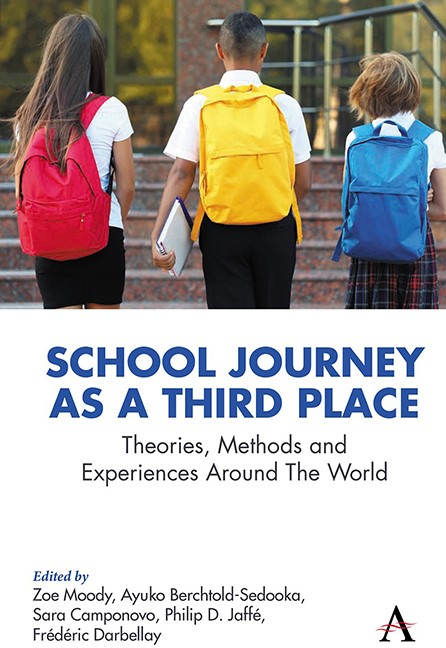Chapter 5 - The Quality of the Way to School Lies in the Design Details
Published online by Cambridge University Press: 14 November 2023
Summary
Introduction
School routes are paths where children learn, gain independence, forge their identity and interact with other beings – be they human or non-human. Many aspects that determine this journey are of social and cultural nature. But the spatial shaping of the way to school can also prove very significant.
When it comes to the formalisation of school routes in urban environments, attention is generally focused on guaranteeing children’s safety from traffic, at a planning level. This chapter argues that many design aspects also need to be considered to contribute to making this journey not only safe but also enriching and playful. Should the school journey be considered as ‘a third place’ (Oldenburg 1989/1999), it needs to be carefully conceived in its smallest details.
Through decisions regarding metrics, spatial divisions, paving, vegetation, lighting features, urban furniture, building entrances and ground floors, private property edges, city spatial designers – mainly architects, landscape architects and urban designers – can have a radical impact on the way children, and people in general, might experience these routes. Whether conscious or unconscious, every design decision will have a direct effect on future appropriation, by supporting (or impeding) some activities.
Rather than promoting specific solutions, design toolkits or absolute answers, this chapter is an invitation for practitioners to question their design decisions, through the lens of child friendliness and more specifically along the concept of ‘learning on the way’. Admittedly, it is rather explorative than assertive.
The first two parts of the chapter focus on what it is like to walk to school in (European) cities and what can be ‘learned on the way’. The focus then shifts to how design can contribute to enhancing this journey. Four main elements upon which designers have an influence – ground, artefacts, natural features, edges – are discussed. Finally, three principles – polyvalent, equivocal and ordinary designs – are introduced to help designers reflect on the effects of their interventions in terms of autonomous and informal learning on the way to school.
- Type
- Chapter
- Information
- School Journey as a Third PlaceTheories, Methods and Experiences around the World, pp. 97 - 122Publisher: Anthem PressPrint publication year: 2023

